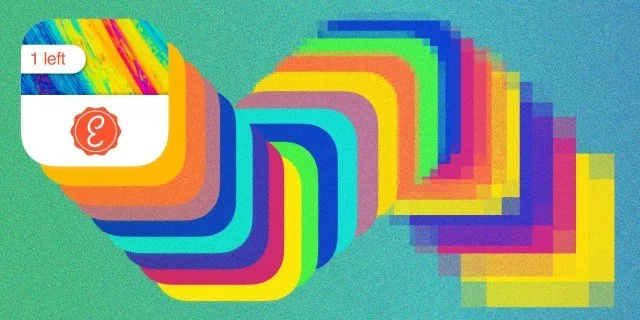
Hot Off the Press
Media applications on blockchain are no different than mainstream apps in one key aspect - content is king. Regardless of the technology behind the photos, art, music, or whatever, there simply has to be a critical mass of creative work constantly being uploaded and engaged for there to be any meaningful traction. This hurdle, combined with the still persistent issues of adoption, has held blockchain back from being a go-to technology for creative practices.
Editional is an upcoming application that looks to change that landscape, offering an experience that isn’t cluttered with burdensome UI and confusing terminology. Created by the team at vault.io, Editional is a transition from their successful Ethereum wallet to tackle the world of NFT creation and economy. Today, we talked all things blockchain media and non-fungible futures with CEO John Egan.

The Creative Crypto (CC): Welcome to the magazine John! Tell us, what have you been up to?
Within the development of Vault, we’ve been thinking of what we would be doing next. We quickly realized very early on that there was a core barrier problem. Anyone should be able to create NFTs, otherwise we’re never going to get enough content into the space to really learn what is great and what people want. Much of the solutions today have too much friction and dissuades users from using them alongside applications like Instagram. We wanted to pursue a brand change and an experience change to start attracting these users with something that feels way more social. Editional is designed to make people feel like creators and exists as the lowest barrier to entry for NFTs that has ever been made.
These were the core motivations of transitioning to Editional. Now we have an application that works really well. It has a fun experience and full connectivity to the larger marketplaces like OpenSea. It’s starting to feel like a good, easy, and fun experience that’s inviting for everyone. I believe this is how we have to push NFT technology to operate at the same level as Instagram.
CC: For people learning about the app for the first time, what is Editional?
Editional is a place where you can come and create limited-edition art. That art can be photos or work uploaded through your phone. Editional takes care of the backend creation of these assets and creators suddenly have a limited number of the works that they made. They can sell them, distribute them, collect them, and so on. And depending on how popular you are or how interesting the item you created is, there will be a rush for people to snatch them up. People don’t understand scarcity until they go to get something and realize there aren’t any left. Editional makes it really easy.
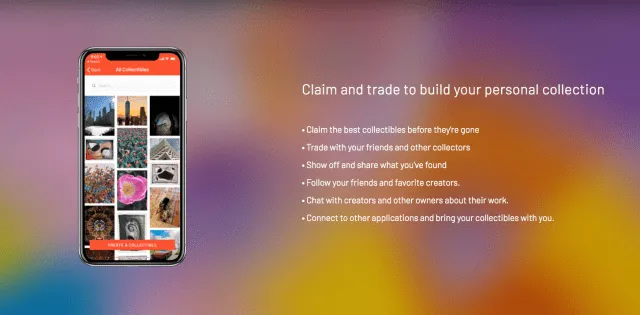
This stands in strong contrast with the Instagram world with lots of light blogging and low-value pieces of content. Now, we’ve got this new world where people are creating high-quality content that people want to own and keep long-term.
CC: What is the current state of the app today?
We just released the app to the public and we’ve been in the testing phase with artists and people we know. For example, I have a friend who is a ballerina who uses it to document her work and activities. We’ve purposefully brought on users that are both from within and outside the blockchain space, and they’ve helped us refine the onboarding process.
CC: What kind of feedback are you getting from testers?
My favorite parts are the unique moments that happen as users try it out for the first time. Many expect it to be very similar to the average other experiences they have with apps with logging in with Facebook and so on. I think it’s the feedback and communication that excites the test userbase. Messages like “You’ve claimed artwork #5 from Jake” instigates meaningful interactions between the creator and collector. They start to chat about the item with other owners and that’s the part that’s really cool. The conversations aren’t around the technology. Users are getting excited about claiming and keeping something on a platform like this, rather than just browsing around random content.
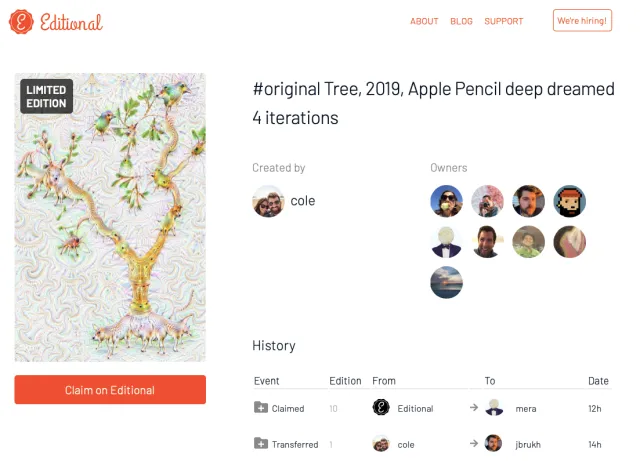
CC: What is the type of content dynamic do you expect to arise as this becomes more widespread?
A few interesting things will happen. We’ll begin to get a different kind of “influencer” in media. We won’t get as many Kylie Jenners and instead, more Picassos will emerge. We’re expecting the nature of being a creator on social media to change drastically with more people who create things that are in demand. The audience interaction will change as well and become much more engaged and staked in the process, as opposed to just watching content go by.
I think we’ll also start to see a new developing relationship between creator and owner. There will be a more intimate back and forth with the creator able to change the nature of that relationship. For example, they’ll be able to grant owners access to certain content, events, etc. since they can prove ownership within their community. This unlocks more interesting NFT capabilities and these possibilities don’t become that obvious until the community is big enough.
At the state we’re in now, the deeper capabilities are much more difficult to use in regards to NFT creation and distribution. Soon, we won’t be talking about the cryptoeconomic terminologies and be more focused on the possibilities of the tech for frontend experiences.
CC: That’s quite interesting. The term “Influencer” wasn’t popularized until the growth of Instagram and Twitter, and the basis of Editional could give rise to a new type of figure.
That’s right, and we’ll see much more creativity as well. There is an incentive now to actually create things in new ways with distribution and collecting in mind. For example, one of our painters Jake created a physical work and created digital editions. He subsequently destroyed the original piece so that his creativity would only live on the blockchain in this scarce way.
CC: It also seems like the first way for artists to scale their collector base that doesn’t rely so heavily on 1-to-1 interaction in galleries, etc.
That’s exactly right. And right now in the NFT space, we’re only seeing ways for owners to interact with the companies that are issuing the assets. If you claim a CryptoKitty, you’re creating a relationship with Dapper. That’s pretty cool, but there’s a great deal of space to establish person-to-person relationships that can scale and really empower the creator. We’re looking to provide more tools to make that relationship more and more interesting.
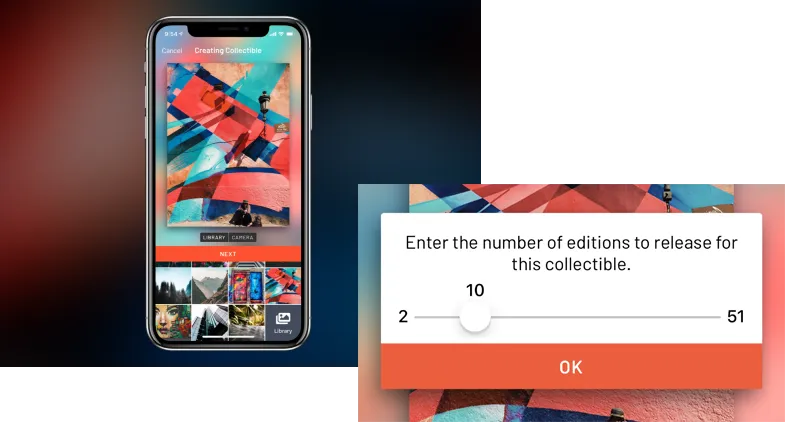
It’ll also motivate creators to constantly increase the value proposition and collectibility of their work. There’s more of a “I have to create something more unique, more worth owning”-type of thinking. “Ownership” is just a codified way to simplify a relationship. Person A created something, person B owns it. And that comes along with a great deal of social benefits that we want to expand on. That’s sort of how it works in the real world. If you collect an artist’s work, they involve you more in their activities and general practice. We’re looking to bridge that into the digital workspace as well.
We won’t get as many Kylie Jenners and instead, more Picassos will emerge. We’re expecting the nature of being a creator on social media to change drastically with more people who create things that are in demand. The audience interaction will change as well and become much more engaged and staked in the process, as opposed to just watching content go by.
CC: Within the blockchain space, comparisons will naturally arise between Editional and other NFT creation and auction platforms like SuperRare, Fanbits, etc. What do you think sets you apart?
I think we’re in a little bit of a different category. These platforms are also very complementary to one another. Again, assets created on Editional will also appear on OpenSea, and we expect that interconnectivity to expand to most other platforms. Right now, many of these existing applications are starved for content. This is unfortunately the result of less mainstream awareness and use, as well as a difficult user experience with Metamask and the like. To really get blockchain media up to point we want, a lot more effort has to be put into the experience to attract Instagram or other mainstream application users.
Editional is the optimal creation platform for the average person and the social interaction is something that you don’t find elsewhere. It’s also important to note that all of these companies are building on the same backbones, so they’re lifting each other up. We cumulatively need to bring in more content to the ecosystem.
CC: What can we look forward to over the next few weeks?
There are a lot of considerations in the works including how we get video in there. NFTs and audio is also an interesting challenge. In general, we’re focused on furthering the relationship between creator and owner, figuring out what that ownership enables.
There’s a general feeling in the tech-heavy blockchain space that just creating the coded foundation is enough to check off the box and say that the tech is unlocked for mainstream use. We have a tendency to say once a script is deployed, to treat it as if it’s really available and applicable.
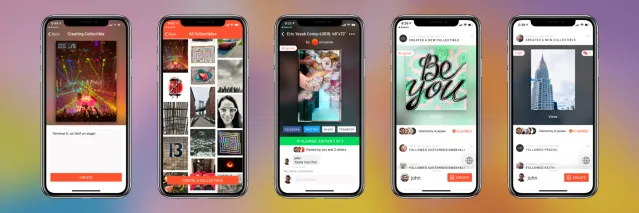
We’re taking a different approach and want to get the tech into people’s pockets. This boils down to even simple push notifications that feel celebratory. You don’t get that much with computer applications. Editional is something very social, very natural, and most importantly, very fun.
Website: https://editional.com/
Twitter: https://twitter.com/editionalapp
App Store: Link
📄 Creative Crypto Homepage
🐤 Twitter
🎨About the Magazine
A magazine dedicated to all things creative on the blockchain. This Steem account hosts a chronological record of all visual and written publication content.
Visit our @steempress - powered magazine: https://thecreativecrypto.com/discovering-the-next-picasso-onchain-interview-with-john-egan-of-editional/